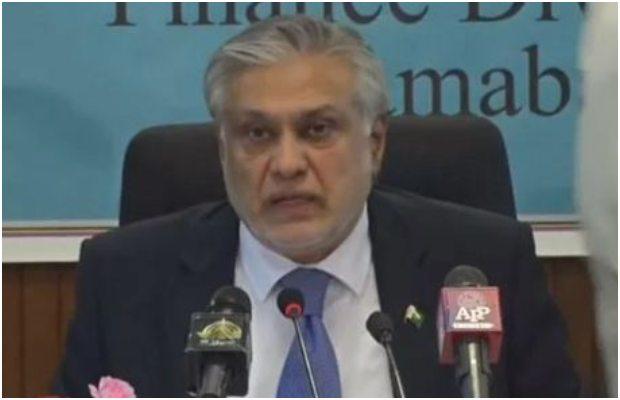Dar unveils the Pakistan Economic Survey 2022-23
The survey recaps a year of massive economic distress in the country

Ishaq Finance Minister Ishaq Dar unveiled the Pakistan Economic Survey 2022-23 on Thursday,
The survey sums up the government’s performance, to the utter dismay of economists as none of the targets was met, while the GDP growth rate crashed to 0.3%, which can be chalked up to natural and political disasters.
The finance minister said that this year the government has added information and technology to the economic survey as a “stand-alone”.
“This sector has the potential for growth in the coming days,” said the minister. He added that the government’s aim is to achieve macroeconomic stability along with inclusivity and resilience.
“We want it to be inclusive to avoid the maldistribution of resources,” said the finance minister.
He emphasized that if this is done that the investors’ confidence can be restored.
Key highlights of the Economic Survey 2022-23:
- Pakistan’s gross domestic product (GDP) grew by 0.29% to Rs84.7 trillion
- The agricultural sector posted growth of 1.55% in FY23, led mainly by improvement in wheat, sugarcane and maize, and livestock
- Industrial growth contracted to 2.94% in the fiscal year 2022-23 against the growth of 6.83% in 2021-22
- The services sector witnessed meager growth of 0.86% in the ongoing fiscal year compared to 6.59% in the last fiscal year
- Headline inflation averaged 29.2% during July-May FY23 (average of 28.2% during July-April) against 11.3% in the same period last year
- Per capita, income fell from $1,765 in the fiscal year 2021-22 to $1,568 in 2022-23
- Investment-to-GDP ratio stood declined to 13.6% in FY23 from 15.6% in FY22 mainly
- Cotton production declined by 41% to 4.91 million bales
- Rice production declined to 7.32 million tonnes from 9.32 million tonnes
- Wheat production was recorded at 27.63 million tonnes compared to 26.21 million tonnes last year
- Fiscal deficit reduced to 4.6% of GDP (Rs3,929.3 billion) during July-April 2022-23 against 4.9% (Rs3,275.2 billion) in the same period of last year
- Total revenues increased by 18.1% to Rs6,938.2 billion (8.2% of GDP) in July-March 2022-23
- Tax revenues grew by 16.5% on the back of a significant rise in FBR tax collection
- Non-tax revenues grew by 25.5% to Rs1.32 trillion during July-March FY23
- Total expenditures grew by 18.7% to Rs10 trillion in Jul-Mar FY2023
- Current expenditures grew by 25.3% to Rs9.24 trillion during July-March FY23
- Bank deposits increased by Rs683 billion from July 1, 2022, to May 12, 2023
- The current account narrowed down by 76.1% and recorded a deficit of $3.3 billion during Jul-Apr FY23
- Workers’ remittances registered a decrease of 13% at $22.7 billion during July-April 2022-23
- SBP’s foreign exchange reserves declined to $4.5 billion by the end of April 2023 mainly on account of the amortization of official loans and liabilities during this fiscal year
- Total public debt stood at Rs59.25 trillion by end-March 2023






